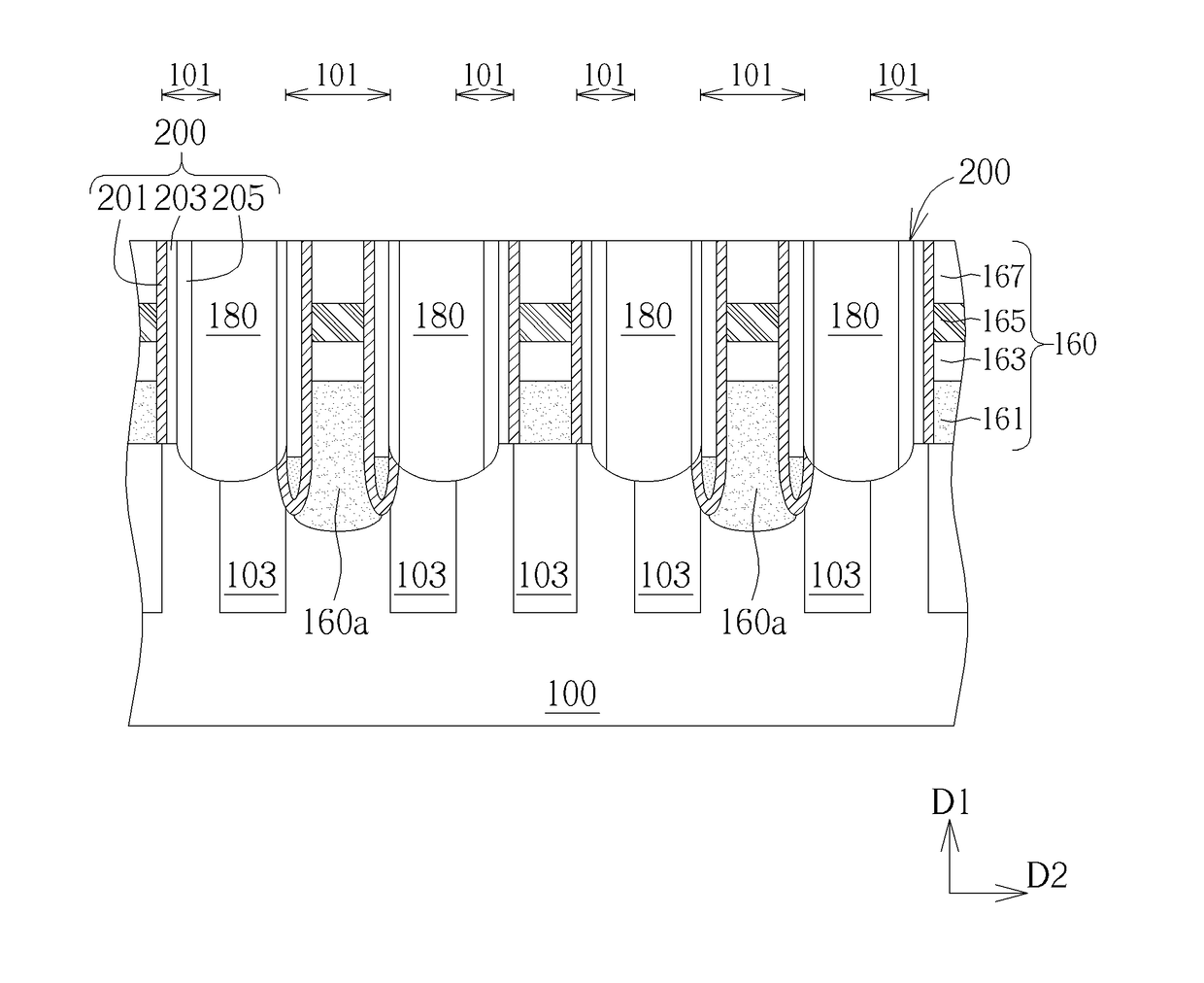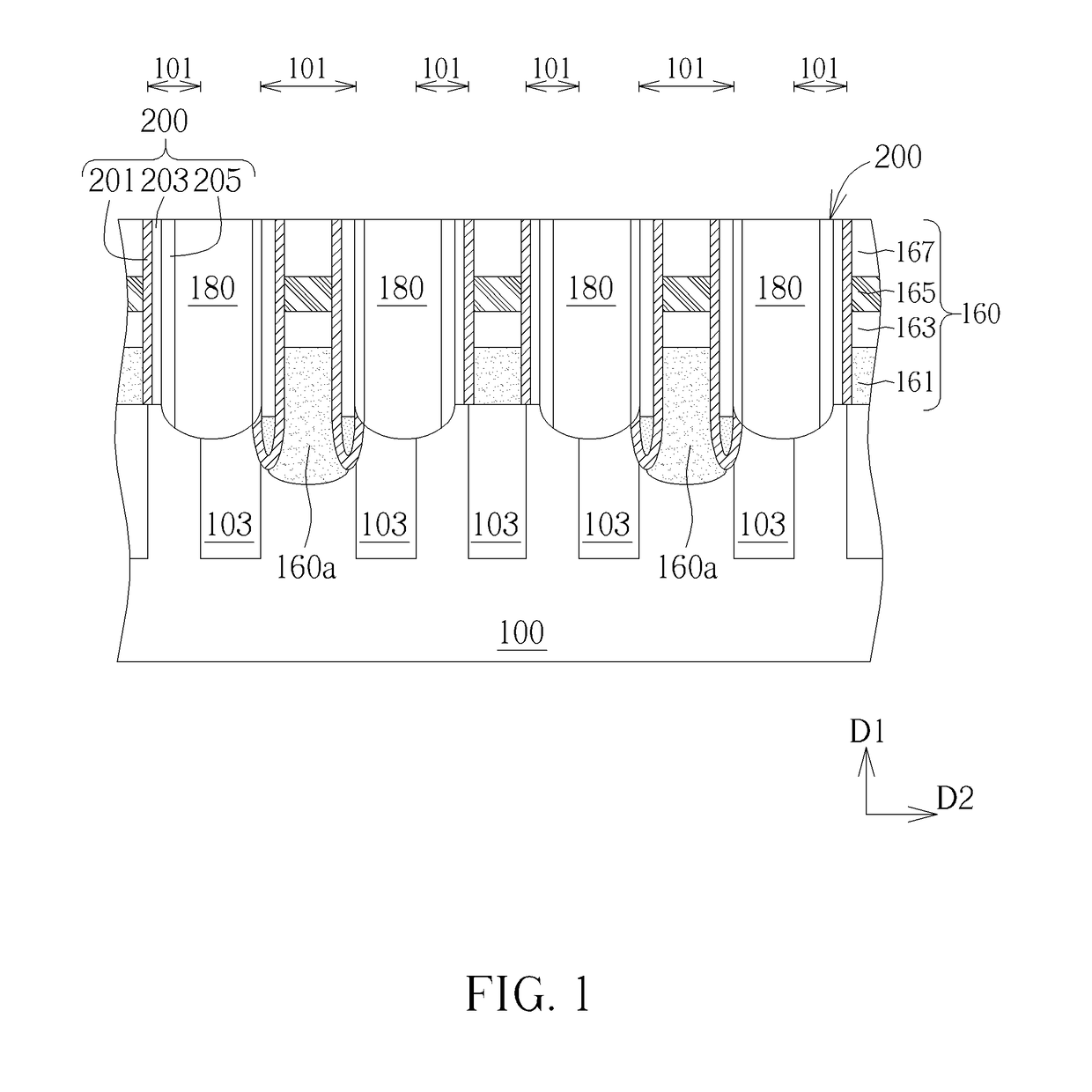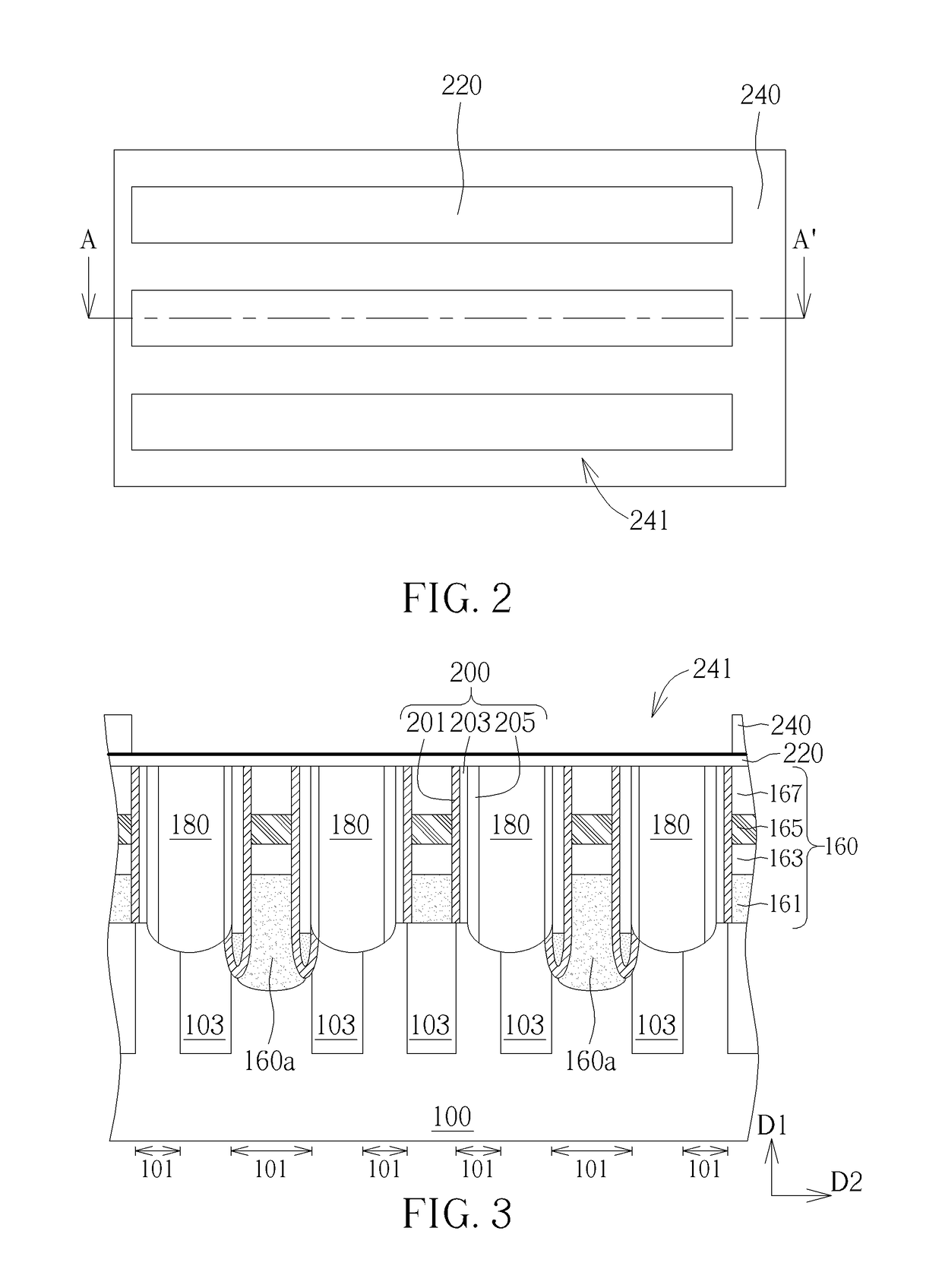Semiconductor device and method of forming the same
a memory device and semiconductor technology, applied in the direction of semiconductor devices, electrical devices, transistors, etc., to achieve the effects of improving support, reducing dielectric constant, and improving rc delay and possible collaps
- Summary
- Abstract
- Description
- Claims
- Application Information
AI Technical Summary
Benefits of technology
Problems solved by technology
Method used
Image
Examples
Embodiment Construction
[0023]To provide a better understanding of the present invention, preferred embodiments will be described in detail. The preferred embodiments of the present invention are illustrated in the accompanying drawings with numbered elements.
[0024]Referring to FIGS. 1-11, FIGS. 1-1 illustrate a forming method of semiconductor memory device according to a first preferred embodiment of the present invention, in which FIGS. 2, 4, 7 and 9 show a top view of a semiconductor memory device during the forming process respectively, others show a cross-sectional view of a semiconductor memory device during the forming process respectively.
[0025]In the present embodiment, a method of forming a memory cell such as a dynamic random access memory (DRAM) device, is provided, and the DRAM device at least includes at least one transistor structure (not shown in the drawings) and at least one capacitor structure (not shown in the drawings), thereto serve as the smallest unit in the DRAM array for accepting...
PUM
 Login to View More
Login to View More Abstract
Description
Claims
Application Information
 Login to View More
Login to View More - R&D
- Intellectual Property
- Life Sciences
- Materials
- Tech Scout
- Unparalleled Data Quality
- Higher Quality Content
- 60% Fewer Hallucinations
Browse by: Latest US Patents, China's latest patents, Technical Efficacy Thesaurus, Application Domain, Technology Topic, Popular Technical Reports.
© 2025 PatSnap. All rights reserved.Legal|Privacy policy|Modern Slavery Act Transparency Statement|Sitemap|About US| Contact US: help@patsnap.com



